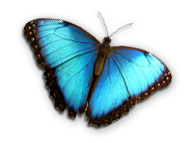




8: Moth and caterpillar house
Now you go to the right, again through a lock, into the moth and caterpillar house. We are also a small zoo, but unlike real zoos, we don’t have a predator house with lions and other wild animals. We have a caterpillar house with voracious little caterpillars. This house is the “nursery” of butterflies, including caterpillars. Here, you can also observe all the other stages of butterfly development. But better from the start: After mating, the female butterfly lays eggs the size of a pinhead on her special food plant. After three to five days, a tiny caterpillar nibbles out of the egg and eats from the leaf it sits on. I suppose you all know the story about “The Very Hungry Caterpillar“ by Eric Carle. They really are very hungry, just imagine that little caterpillars eat two thousand times their body weight in six weeks. If a baby ate that much, it would weigh the weight of an elephant after six weeks. With so much to eat, it’s no wonder that the caterpillar grows very quickly. Several times it must get rid of its caterpillar skin, which doesn’t grow like human skin does, so it sheds it. After the last molt, the caterpillar pupates. The transformation into a butterfly now takes place in the well-camouflaged pupa. Look around the Heinrich and Casimir Bridges, maybe you can discover the different stages of development. Sometimes here, in addition to the caterpillars, you can admire one of the largest moths on earth, the gigantic atlas moth (Attacus atlas), which has a wingspan of up to 30 cm. Like almost all moths, it is active at night and rests during the day. The lifespan of the Attacus moth is only very short, since they lack the ability to nourish themselves; they do not have a probiscis to feed on nectar. So within a few days they must find a mate to reproduce. Another peculiar trait of this species of silkworm is, before pupating, the caterpillar spins a cocoon of silk around itself. It can spin a thread four kilometers long in less than two days. The fine silk thread is tear-resistant and protects the caterpillar, which turns into a butterfly in the cocoon.
 |
 |
 |


